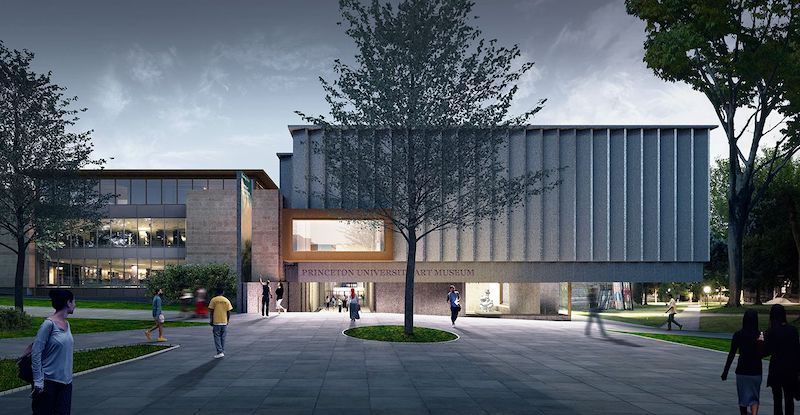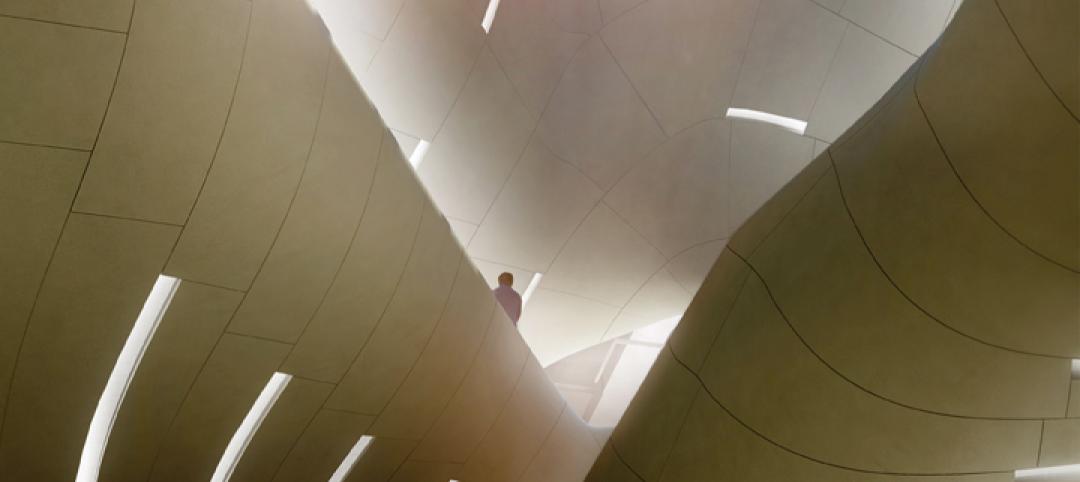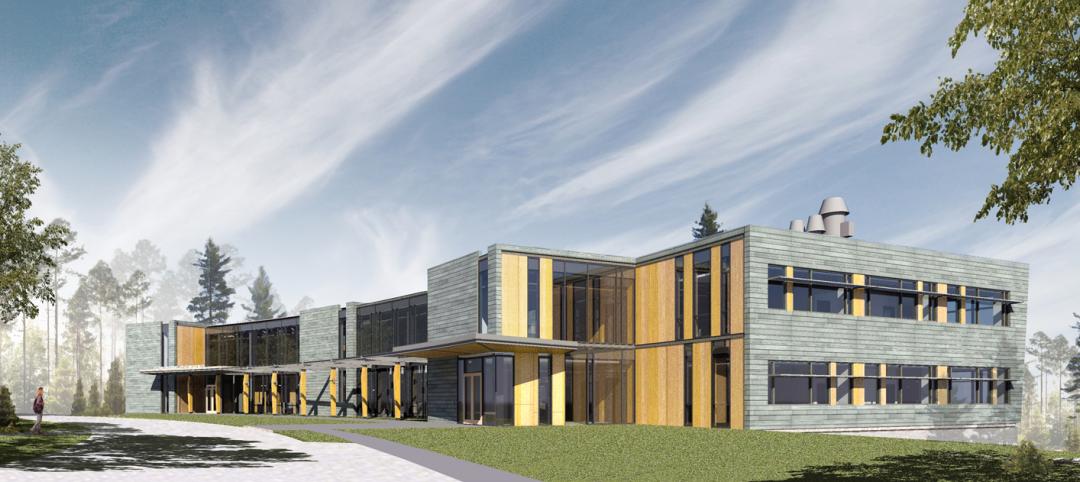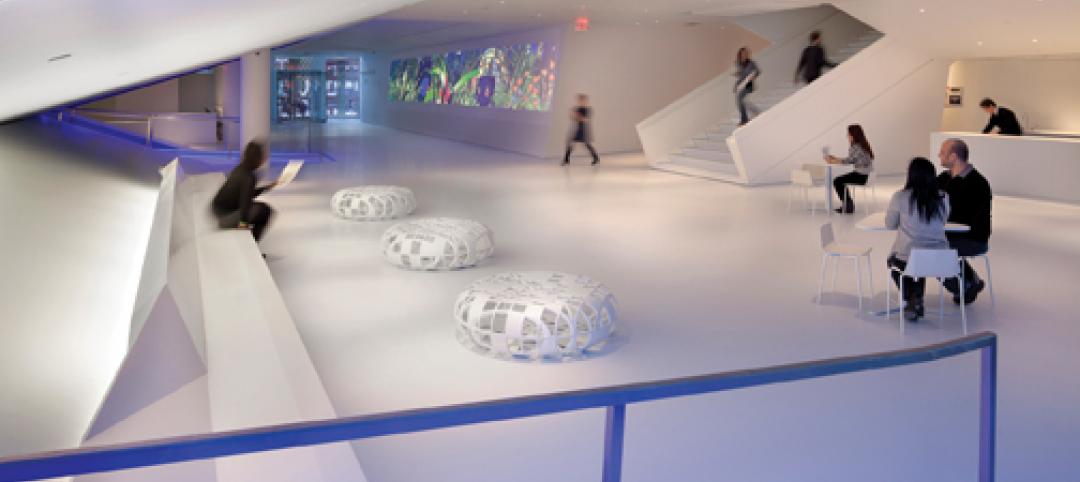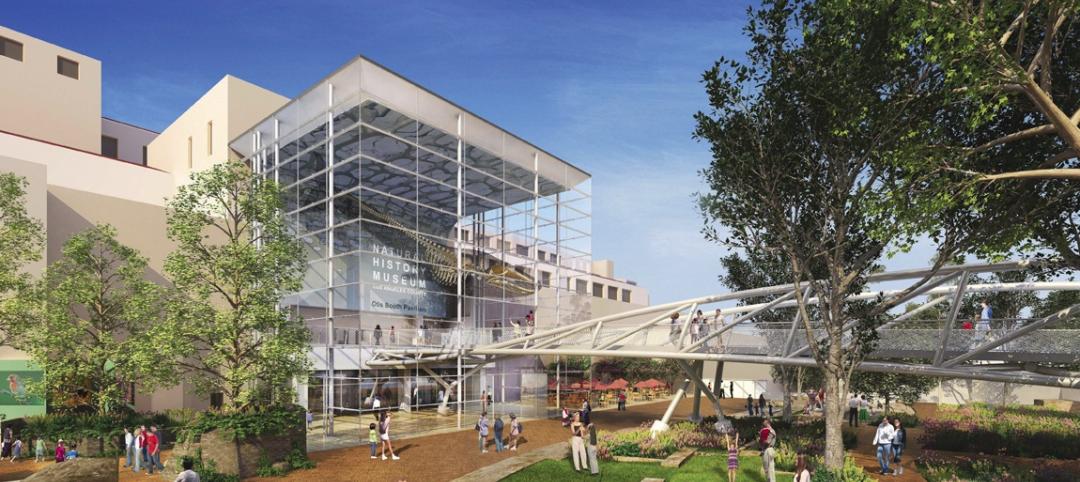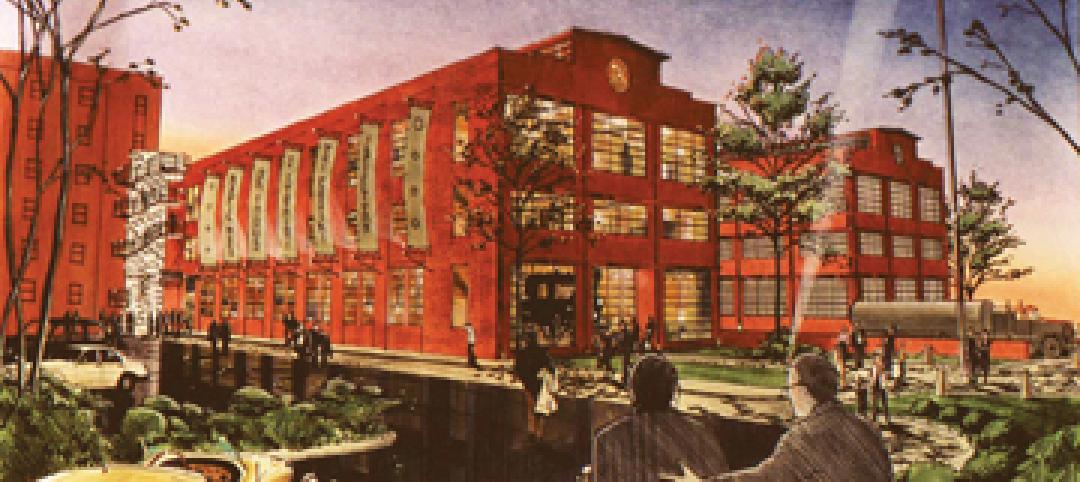One of the jewels in New Jersey’s cultural crown is Princeton University’s Art Museum, which was established in 1882, and whose present collection exceeds 110,000 objects. The museum is known for its Greek and Roman antiquities and Western European paintings. It also has a noteworthy collection of Asian art, as well as an extensive photography array.
But like most other institutions, Princeton’s museum only has enough space to exhibit a tiny fraction of its collection. Last month, the Art Museum unveiled the designs for a new 144,000-sf museum that would double the size of the existing building. James Steward, the museum’s director, estimates that the percentage of objects on view from permanent collections would triple to 6% in the new building, from 2% in the existing museum. And elements of visible storage will be featured throughout the new building.
Demolition of the existing museum—which is currently closed due to the coronavirus pandemic—is expected to begin in the middle of next year, with the goal of reopening in the new museum by late 2024.
CAMPUS ART MUSEUM DESIGN ALLOWS FOR GREATER ACCESS, CIRCULATION
Architect Sir David Adjaye’s three-story design breaks down the mass of the museum by creating nine interlocking cubes that relate to the scale of the university structures around it. (The current museum is located in the middle of the university’s wooded main campus.) Adjaye Associates collaborated on the museum’s design with executive architect Cooper Robertson.
There will be six ground-floor entrances in the new building (as opposed to one in the existing museum), making what Adjaye calls “a museum in the round.” The design also creates two enclosed “art walks” running north-south and east-west through the building’s ground floor.
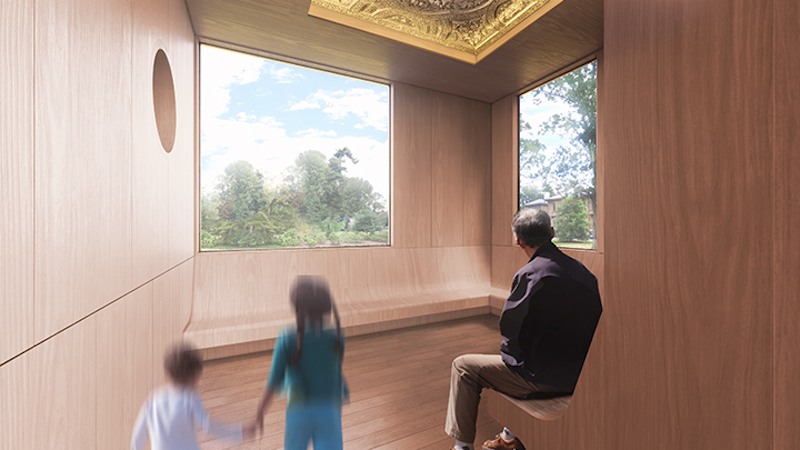
A singular “lens” moment at the complex’s northeast corner creates an intimate viewing and reading room, affords views onto the campus, and shapes a display opportunity for unique works from the collections. Image: Adjaye Associates
Each of the museum’s seven pavilions will include intimate spaces made from bronze and glass. All of the galleries will be on the second floor, a move that’s intended to smudge the lines that traditionally demarcate art by geography and historical period.
A CAMPUS WITHING A CAMPUS, THE ART MUSEUM WILL BE A DYNAMIC LEARNING CENTER
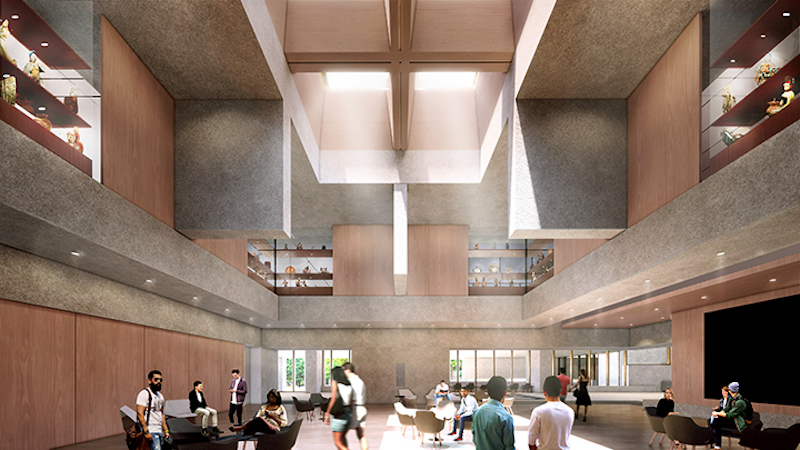
The double-height Grand Hall sits at the heart of the Museum complex and will function as a lecture hall and performance space that will host many of the Museum’s larger events. Image: Adjaye Associates
The design also includes outdoor terraces and spaces for performance and events that can accommodate anywhere from 200 to 2,000 people. These spaces include a hall for lectures, performances, and events; classrooms, two labs and a rooftop café. The design also shapes a new home for the University’s Department of Art & Archaeology, while retaining Marquand Library. Together, the three units would create a campus within a campus, and will continue to function as a dynamic center for research and teaching.
“I want the building to feel that it’s not just a hall of sacred objects but as … a common hall, so students can just go there if they feel like it and want to work close to those objects,” says Adjaye, whose firm was selected for this project in 2018. “If they have a compelling urge to see an incredible print or a sculpture or a delicate ceramic or bronze piece, it becomes a resource.”

The new museum will be built on the site of the older building, and be home to the university's Art & Archeology department. Image; Princeton University Art Museum
Steward, the museum’s director, told the Art Newspaper that 98% of the funds for the construction have been raised. He declined to disclose the construction cost.
Adjaye Associates has several prominent museum projects under its belt. It was one of several architect firms involved in the National Museum of African American History and Culture in Washington DC. The firm also designed the Studio Museum that’s under construction in Harlem in New York, the Museum of Contemporary Art in Denver, and the Ruby City art center in San Antonio.
Adjaye also served as a visiting professor at Princeton’s School of Architecture from 2008 to 2010.
Related Stories
| Oct 12, 2011
BIM Clarification and Codification in a Louisiana Sports Museum
The Louisiana State Sports Hall of Fame celebrates the sporting past, but it took innovative 3D planning and coordination of the future to deliver its contemporary design.
| Oct 12, 2011
Consigli Construction breaks ground for Bigelow Laboratory Center for Ocean Health
Consigli to build third phase of 64-acre Ocean Science and Education Campus, design by WBRC Architects , engineers in association with Perkins + Will
| Sep 12, 2011
Living Buildings: Are AEC Firms up to the Challenge?
Modular Architecture > You’ve done a LEED Gold or two, maybe even a LEED Platinum. But are you and your firm ready to take on the Living Building Challenge? Think twice before you say yes.
| Apr 13, 2011
Expanded Museum of the Moving Image provides a treat for the eyes
The expansion and renovation of the Museum of the Moving Image in the Astoria section of Queens, N.Y., involved a complete redesign of its first floor and the construction of a three-story 47,000-sf addition.
| Apr 12, 2011
Entrance pavilion adds subtle style to Natural History Museum of Los Angeles
A $13 million gift from the Otis Booth Foundation is funding a new entrance pavilion at the Natural History Museum of Los Angeles County. CO Architects, Los Angeles, is designing the frameless structure with an energy-efficient curtain wall, vertical suspension rods, and horizontal knife plates to make it as transparent as possible.
| Jan 21, 2011
Sustainable history center exhibits Fort Ticonderoga’s storied past
Fort Ticonderoga, in Ticonderoga, N.Y., along Lake Champlain, dates to 1755 and was the site of battles in the French and Indian War and the American Revolution. The new $20.8 million, 15,000-sf Deborah Clarke Mars Education Center pays homage to the French magasin du Roi (the King’s warehouse) at the fort.
| Jan 19, 2011
Industrial history museum gets new home in steel plant
The National Museum of Industrial History recently renovated the exterior of a 1913 steel plant in Bethlehem, Pa., to house its new 40,000-sf exhibition space. The museum chose VOA Associates, which is headquartered in Chicago, to complete the design for the exhibit’s interior. The exhibit, which has views of five historic blast furnaces, will feature artifacts from the Smithsonian Institution to illustrate early industrial America.
| Jan 19, 2011
Museum design integrates Greek history and architecture
Construction is under way in Chicago on the National Hellenic Museum, the nation’s first museum devoted to Greek history and culture. RTKL designed the 40,000-sf limestone and glass building to include such historic references as the covered walkway of classical architecture and the natural wood accents of Byzantine monasteries. The museum will include a research library and oral history center, plus a 3,600-sf rooftop terrace featuring three gardens. The project seeks LEED Silver.
| Nov 23, 2010
The George W. Bush Presidential Center, which will house the former president’s library
The George W. Bush Presidential Center, which will house the former president’s library and museum, plus the Bush Institute, is aiming for LEED Platinum. The 226,565-sf center, located at Southern Methodist University, in Dallas, was designed by architect Robert A.M. Stern and landscape architect Michael Van Valkenburgh.
| Nov 2, 2010
Cypress Siding Helps Nature Center Look its Part
The Trinity River Audubon Center, which sits within a 6,000-acre forest just outside Dallas, utilizes sustainable materials that help the $12.5 million nature center fit its wooded setting and put it on a path to earning LEED Gold.


